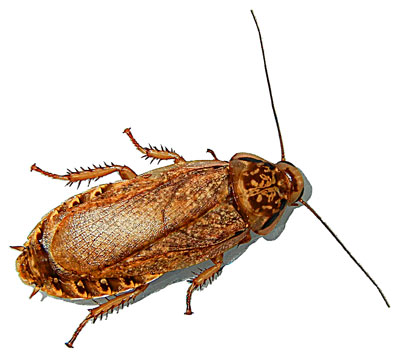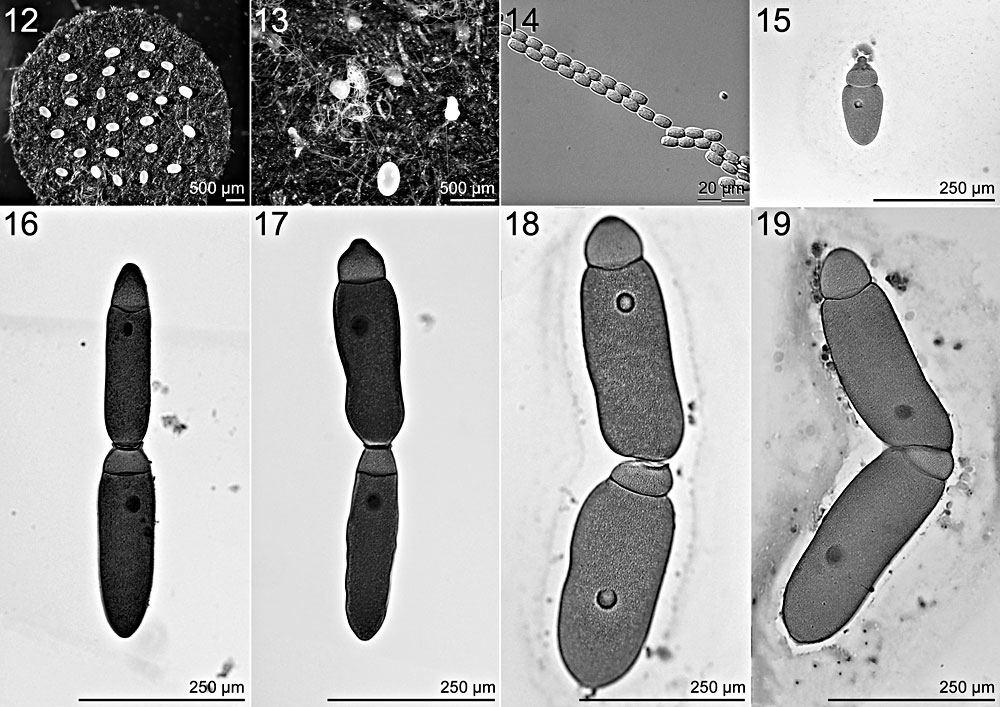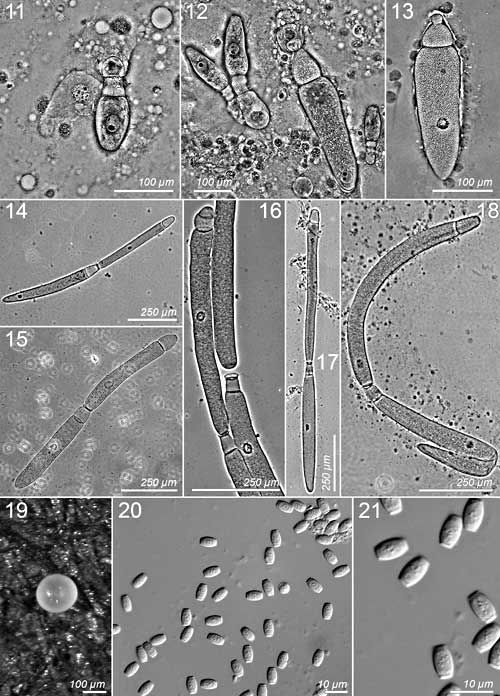Gregarines from Nauphoeta cinerea
The lobster cockroach, Nauphoeta cinerea, is also commonly called the cinerous, small cinerous, marble, speckled, tampa, little brown cuban, tanzanian, madeira, and mauritius cockroach. The variety of common names for this species reflects both the species apparency and distribution. Lobster cockroaches are "paradomestic", that is, they commonly inhabit areas near or around human dwellings or structures. The species is circumtropical in distribution. Their association with humans, combined with their distribution means that humans encounter them commonly and thus give them common names. In some parts of the tropical world, Nauphoeta cinerea is a true domiciliary cockroach that invades human structures and is considered a pest species.
Originally described from specimens taken on Mauritius in the Mascarene Islands of the Indian Ocean, Nauphoeta cinerea is probably east African in origin. Populations were apparently disseminated along global trading routes by sailing vessels: first throughout the Malagasy region by Arab traders and then to the Philippines and the Orient by Portuguese and Spanish vessels in the 16th and 17th centuries; New World colonies in Brazil, Mexico and the Caribbean were probably disseminated by Portuguese traders in goods brought from the Philippines (see Rehn, 1945). Their proclivity for facultative parthenogenesis has made Nauphoeta cincerea popular as a laboratory research model and they are a popular colonized live prey item in the captive reptile trade worldwide. Documented collections from wild populations include Cuba, Hispaniola, Mexico, Brazil, the Galapagos Islands, and Florida (U.S.A.) in the New World; Malaysia, Thailand, the Hawaiian Islands (U.S.A.), the Philippines, Sumatra, Australia, and New Caledonia in the Pacific; and, Egypt, Sudan, Tanzania, South Africa, Madagascar, and Mauritius in east Africa.
The lobster cockroach hosts 2 gregarine species: Blabericola haasi (Geus, 1969) Clopton, 2009 and Protomagalhaensia wolfi (Geus, 1969) Clopton & Hays, 2006. These gregarine species were originally described by Geus (1969) from a small sample of Nauphoeta cinerea nymphs collected from the Holy See's Territorial Abbey at Ndanda, Tanzania (each species epithet honors a monk of the Benedictine Order). We redescribed both Blabericola haasi and Protomagalhaensia wolfi to stabilize the taxa as part of our survey of gregarine biodiversity.
Clopton, R. E. 2012. Synoptic revision of Blabericola (Apicomplexa: Eugregarinida: Blabericolidae) parasitizing blaberid cockroaches (Dictyoptera: Blaberidae) with comments on recognizing and delineating gregarine species boundaries. Journal of Parasitology 98(3): 572-583. PDF
Clopton, R. E. 2009. Phylogenetic Relationships, Evolution, and Systematic Revision of the Septate Gregarines (Apicomplexa: Eugregarinorida: Septatorina). Comparative Parasitology 76(2): 167-190. PDF
Clopton, R. E., and J. J. Hays. 2006. Revision of the Genus Protomagalhaensia and Description of Protomagalhaensia wolfi n. comb. (Apicomplexa: Eugregarinida: Hirmocystidae) and Leidyana haasi n. comb. (Apicomplexa: Eugregarinida: Leidyanidae) Parasitizing the Lobster Cockroach, Nauphoeta cinerea (Dictyoptera: Blaberidae) Comparative Parasitology 73: 137-156. PDF
Geus, A. 1969. Sporentierchen, Sporozoa: die Gregarinida der land- und süßwasserbewohnenden Arthropoden Mitteleuropas. In F. Dahl, ed. Die tierwelt Deutschlands und der angrenzenden Meeresteile nach ihren Merkmalen und nach ihrer Lebensweise. Gustav Fischer, Jena, Germany. 608 pp.
Rehn, J. A. G. 1945. Man's uninvited fellow-traveler – the cockroach. The Scientific Monthly 61: 265-276.

Nauphoeta cinerea, adult female.

Blabericola haasi, life cycle stages. (12) Gametocysts. (13) Monete oocyst chains dehisced from mature gametocysts. (14) Oocysts. (15) Solitary trophozoite with epimerite. (16-19) Variation in typical mature associations. (From Clopton, 2012a).

Protomagalhaensia wolfi, life cycle stages. (11, 12) Young trophozoite. (13) Older trophozoite. (14, 15) Young associations. (16, 17) Associations showing the association interface and satellite acetabulum. (18) Mature gamonts in association. (19) Gametocyst. (20, 21) Oocysts. (From Clopton & Hays, 2006).
